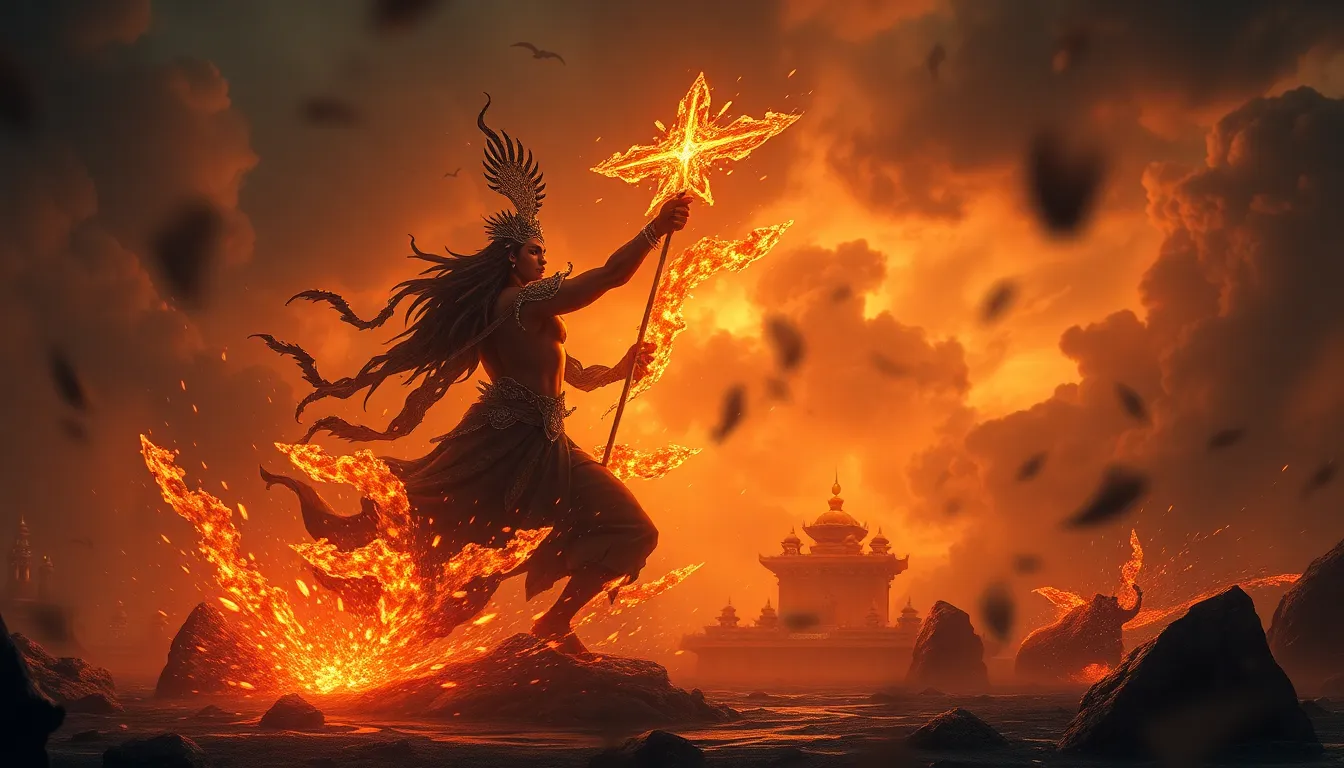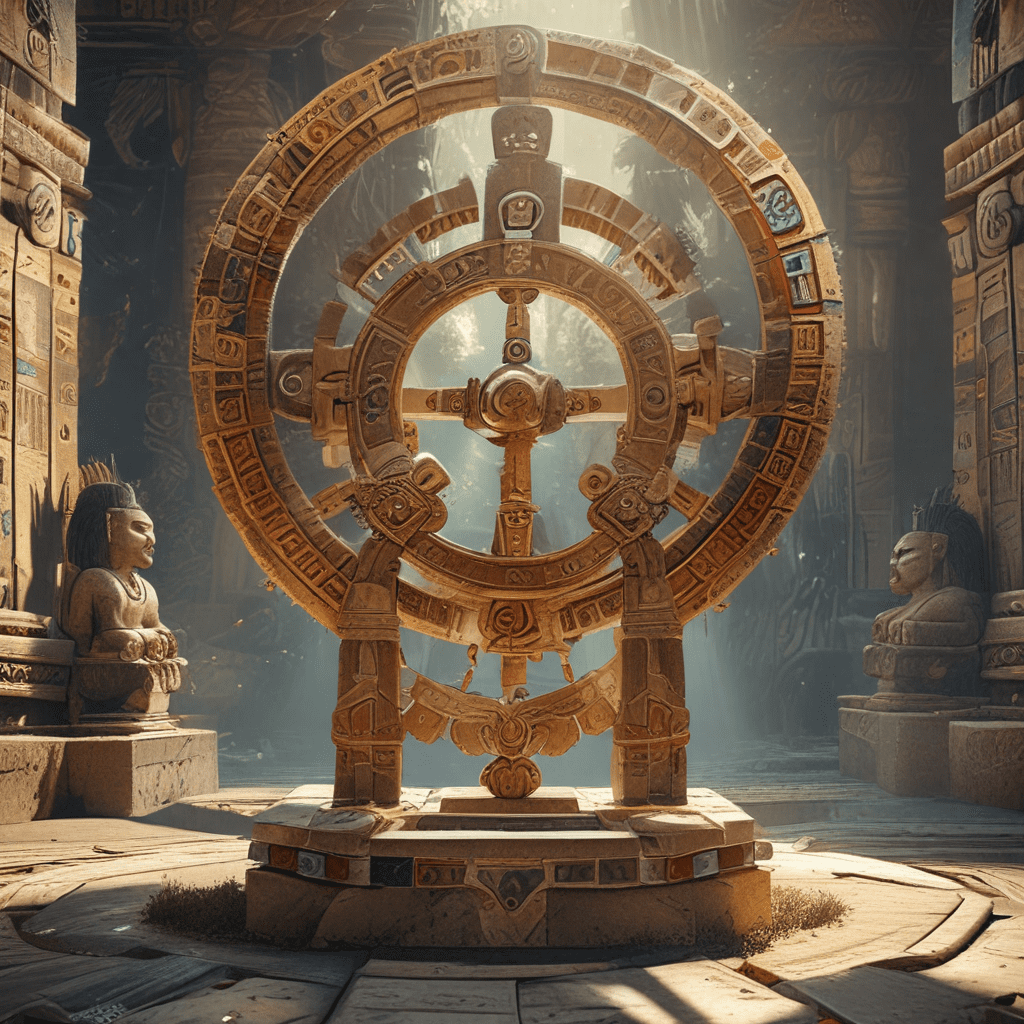Fenrir and the Valkyries: The Wolf’s Connection to the Goddesses of War
I. Introduction
In the rich tapestry of Norse mythology, few figures are as intriguing and complex as Fenrir, the monstrous wolf prophesied to bring about great destruction. Fenrir embodies chaos and primal power, drawing a stark contrast to the Valkyries, the fierce warrior maidens who serve Odin and choose those who may die or live in battle. This article aims to explore the profound connections between Fenrir and the Valkyries, examining their roles and significance within the mythological framework of Norse lore.
II. The Mythological Significance of Fenrir
A. Origins of Fenrir in the Norse pantheon
Fenrir, often referred to simply as Fenris, is one of the descendants of Loki, the trickster god, and the giantess Angerboda. He is one of three notable offspring, including Jormungandr, the World Serpent, and Hel, the goddess of the underworld. Fenrir’s birth represents the chaotic and unpredictable nature of Loki’s lineage, and he is destined to play a crucial role in the events of Ragnarok.
B. Prophecies surrounding Fenrir and his fate
According to the myths, the gods feared Fenrir’s potential for destruction. They attempted to bind him with various chains, but he broke free from each one. The final binding, made of a magical ribbon called Gleipnir, was crafted from impossible ingredients: the sound of a cat’s footfall, the beard of a woman, the roots of a mountain, and more. The gods deceived Fenrir into allowing himself to be bound under the pretense of a friendly contest of strength, revealing the deep-seated fear and foreknowledge of his destructive nature.
C. Fenrir’s role in Ragnarok
Fenrir’s most significant role comes during Ragnarok, the foretold apocalypse in Norse mythology. During this cataclysmic event, Fenrir is prophesied to break free from his chains and engage in a ferocious battle against Odin himself. It is said that he will devour Odin, symbolizing the chaos that ensues when order is disrupted, and fate unfolds as foretold.
III. Understanding the Valkyries
A. Definition and characteristics of Valkyries
Valkyries, meaning “choosers of the slain,” are supernatural maidens serving Odin. They are often depicted as beautiful, fierce, and armored, riding through the skies on horseback. Their primary function is to select those warriors who are worthy of dying in battle and to escort them to Valhalla, Odin’s hall, where they prepare for the events of Ragnarok.
B. Their function in choosing the slain warriors
The Valkyries play a critical role in the Norse belief system regarding death and the afterlife. They observe battles from the sky and descend to choose the fallen heroes. The selected warriors are honored in Valhalla, where they feast and train until the day of Ragnarok, contributing to the theme of valor and heroism in Norse culture.
C. The Valkyries’ relationship with Odin and the afterlife
Odin, as the Allfather, has a unique relationship with the Valkyries. He not only sends them to choose the slain but also relies on their guidance and influence over fate. The Valkyries are often portrayed as extensions of Odin’s will, embodying both the nurturing and destructive aspects of war. Their role in the afterlife is crucial, as they ensure that the bravest warriors are honored and prepared for the inevitable conflict of Ragnarok.
IV. The Interplay Between Fenrir and the Valkyries
A. Symbolism of wolves in Norse mythology
Wolves in Norse mythology often symbolize destruction, chaos, and the primal instincts of nature. Fenrir, as the most notable wolf figure, embodies these characteristics, representing the darker aspects of existence. In contrast, Valkyries symbolize honor, valor, and the nobility of battle. Together, they illustrate the duality present in Norse beliefs regarding war and the natural order.
B. Fenrir as a force of chaos and destruction
As a creature of chaos, Fenrir disrupts the balance of the cosmos. His eventual release during Ragnarok signifies the collapse of order and the triumph of chaos. This chaos serves as a catalyst for the Valkyries’ actions, as they strive to uphold valor amidst the destruction, choosing the slain to ensure the continuation of honor and legacy.
C. Valkyries as mediators of fate and warriors of valor
The Valkyries act as mediators between the realms of the living and the dead. They embody the warrior spirit and are tasked with ensuring that those who die in battle are remembered and honored. In contrast to Fenrir’s destructive nature, the Valkyries’ influence over fate allows them to shape the outcomes of battles, emphasizing the importance of choice and honor in warfare.
V. Fenrir and the Concept of Fate
A. The intertwining of Fenrir’s destiny with the lives of warriors
Fenrir’s fate is inexorably linked to the destinies of the warriors chosen by the Valkyries. His emergence during Ragnarok signifies the end of an era, while the Valkyries’ selection of heroes ensures that the legacy of valor continues. This interconnectedness highlights the belief in a predetermined fate that governs the lives and deaths of all beings in Norse mythology.
B. How Valkyries influence the outcomes of battles
The Valkyries possess the power to influence the outcomes of battles through their choices. By selecting the most courageous warriors, they ensure that these heroes are honored in Valhalla, ultimately preparing them for the final confrontation during Ragnarok. This interplay between choice and fate underscores the complexity of Norse beliefs regarding destiny.
C. The philosophical implications of fate in Norse beliefs
Norse mythology presents a unique perspective on fate, wherein the characters, including Fenrir and the Valkyries, are bound by a predetermined destiny. However, the actions of the Valkyries suggest that while fate is fixed, the manner in which individuals meet their destinies can be influenced by their valor and choices in life, creating a nuanced understanding of free will versus predestination.
VI. Cultural Representations of Fenrir and the Valkyries
A. Artistic depictions through history
Throughout history, Fenrir and the Valkyries have been depicted in various forms of art, from ancient carvings and tapestries to modern illustrations. These representations often emphasize their respective roles in the cosmic order, showcasing Fenrir as a fearsome beast and the Valkyries as ethereal figures of beauty and strength.
B. Literature and modern interpretations
Literature has long explored the themes surrounding Fenrir and the Valkyries, presenting them in both traditional and contemporary contexts. Works such as Richard Wagner’s “Der Ring des Nibelungen” and Neil Gaiman’s “Norse Mythology” reimagine these figures, weaving their stories into broader narratives that resonate with modern audiences.
C. Fenrir and Valkyries in popular culture
In popular culture, Fenrir and the Valkyries have made appearances in films, television series, and video games. They are often portrayed as powerful archetypes, embodying the themes of chaos and valor. Examples include their representations in Marvel Comics and the video game “God of War,” where their mythological roots are explored in engaging and innovative ways.
VII. Comparative Analysis with Other Mythologies
A. Similarities with other mythological wolf figures
Similar to Fenrir, other mythologies feature wolf figures that embody chaos and destruction. For instance, in Roman mythology, the she-wolf that nurtured Romulus and Remus represents both creation and chaos. This duality highlights a common theme across cultures where wolves symbolize both danger and protection.
B. Parallels between Valkyries and goddesses in other cultures
The concept of warrior maidens selecting the slain is not unique to Norse mythology. Many cultures have similar figures, such as the Amazons in Greek mythology or the Valkyries’ parallels in Celtic lore, where women play significant roles in battle and the afterlife. These comparisons reveal universal themes of war and divine intervention across various cultures.
C. The universal themes of war, fate, and divine intervention
Across different mythologies, the themes of war, fate, and divine intervention recur. Figures like Fenrir and the Valkyries exemplify how cultures interpret these themes, illustrating humanity’s fascination with the interplay between chaos and order, valor and destruction, and the ultimate fate of the soul.
VIII. Conclusion
In conclusion, Fenrir and the Valkyries represent two sides of the same coin within Norse mythology. Fenrir,



